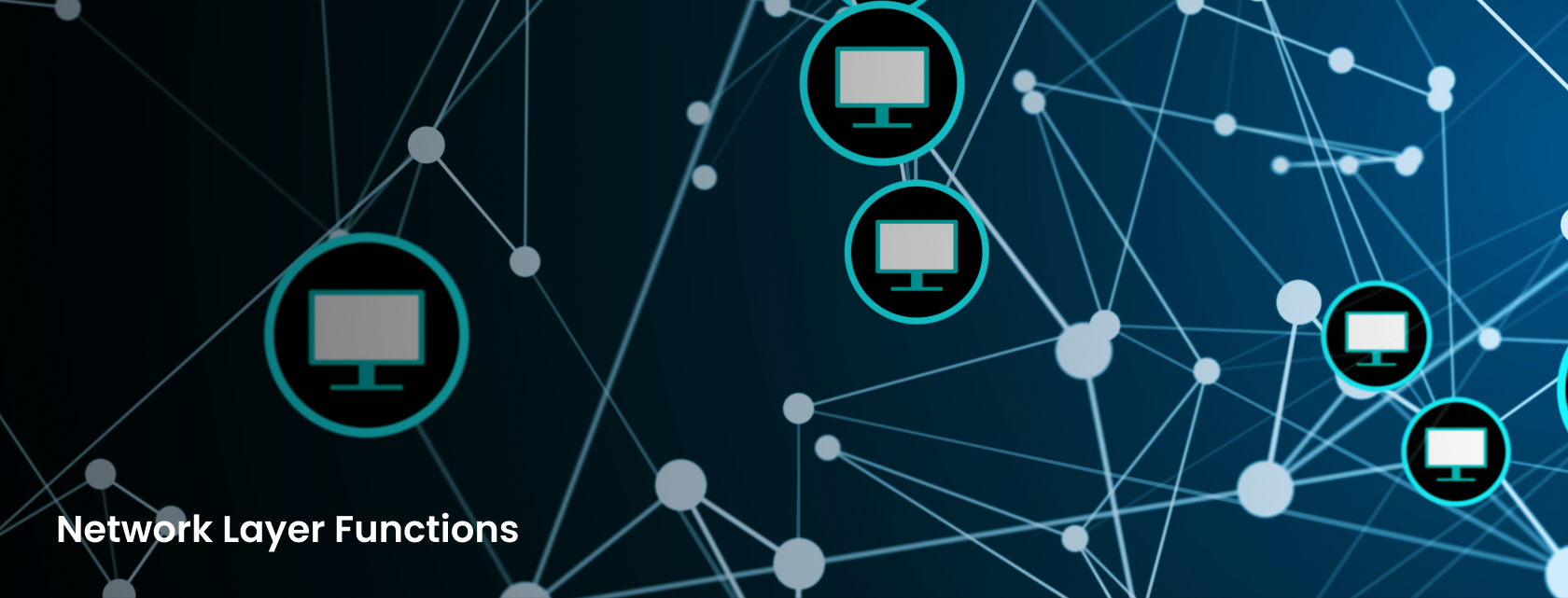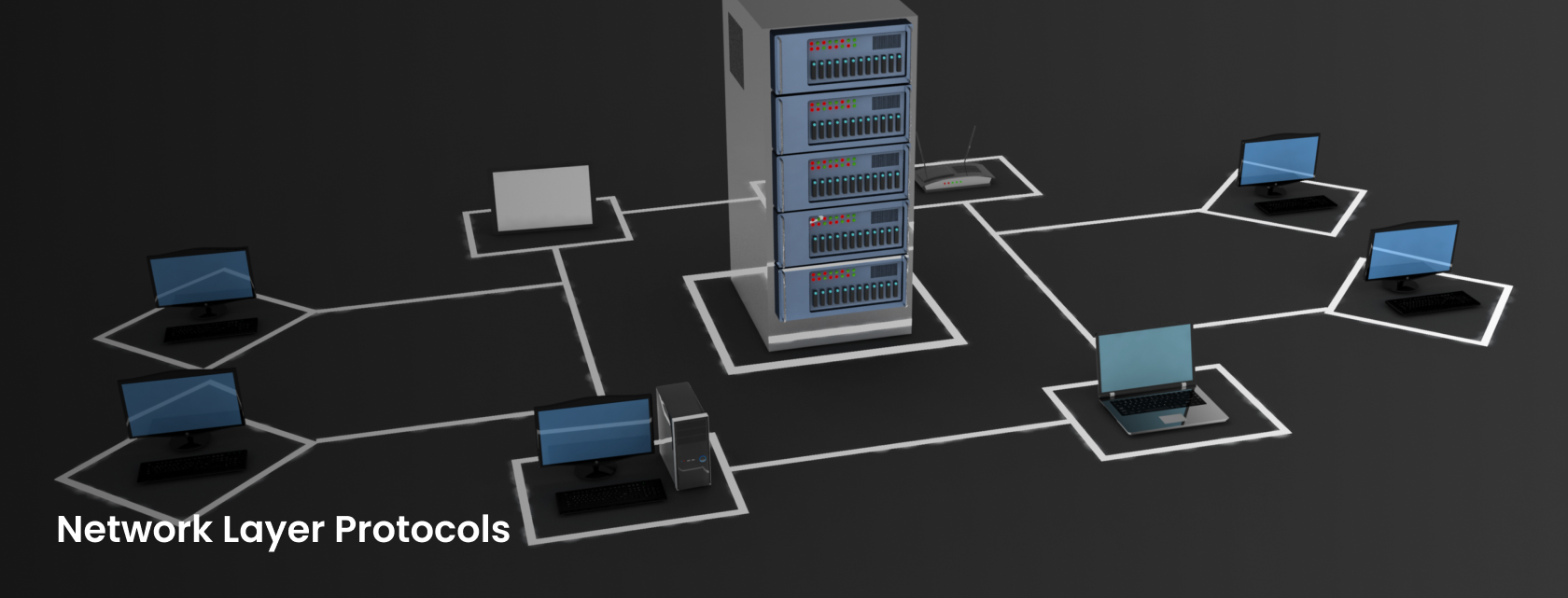The network layer in computer networks plays a crucial role in ensuring seamless data transmission across different devices and networks.
As the third layer in the OSI model, it manages routing, addressing, and packet forwarding. But what is the network layer, and why is it essential for modern communication?
This article explores the functions of the network layer, the network layer protocols, and its role in the internet to help you understand its importance in networking.
Network Layer in Computer Networks (Brief Overview)
- Its role in enabling communication across multiple networks.
- Routing, logical addressing, packet forwarding, and congestion control.
- Key protocols like IP, ICMP, OSPF, BGP, and ARP.
- How it ensures global connectivity and seamless data transfer.
- A comparison of their roles and protocols.
- Understanding that the network layer deals with packets.
- Learn more with the Networking Fundamentals Course on FastLearner.ai.
What is the Network Layer?

To define the network layer, it is responsible for delivering data packets from one host to another across interconnected networks. Unlike the data link layer, which ensures communication within a single network, the network layer in the OSI model enables communication across multiple networks, making global connectivity possible.
The network layer achieves this by handling:
- Logical addressing (IP addresses)
- Routing data packets
- Fragmentation and reassembly of packets
- Error handling and congestion control
Functions of the Network Layer

The function of the network layer is to establish reliable end-to-end communication, ensuring that data packets reach their destination accurately and efficiently. Some of the core functions of the network layer include:
1. Logical Addressing
Unlike MAC addresses used at the data link layer, the network layer assigns unique logical addresses (IP addresses) to devices. These addresses help identify the source and destination of data packets.
2. Routing
One of the most crucial responsibilities of the network layer is determining the optimal path for data transmission. Routing algorithms and network layer protocols like OSPF and BGP enable this process.
3. Packet Forwarding
After determining the best route, the network layer ensures data packets move from the sender to the receiver through routers and other network devices.
4. Packet Fragmentation and Reassembly
Different networks have varying maximum transmission unit (MTU) sizes. If a data packet is too large, the network layer fragments it and reassembles it at the destination.
5. Error Handling and Congestion Control
The network layer manages network congestion by rerouting data when necessary and detecting packet errors to ensure smooth data transmission.
For more in-depth learning, check out the Networking Fundamentals Course on FastLearner.ai and enhance your knowledge of networking principles today!
Key Network Layer Protocols

The network layer protocol set includes several essential protocols that facilitate communication across different networks. These include:
1. Internet Protocol (IP)
IP is the fundamental protocol that assigns unique addresses to devices and ensures data is delivered across networks. It has two versions: IPv4 and IPv6.
2. Internet Control Message Protocol (ICMP)
ICMP is used for network diagnostics and error reporting, commonly used in tools like Ping and Traceroute.
3. Open Shortest Path First (OSPF)
OSPF is a dynamic routing protocol that determines the shortest path for data transmission.
4. Border Gateway Protocol (BGP)
BGP is used to exchange routing information between different networks, making it crucial for internet operations.
5. Address Resolution Protocol (ARP) & Reverse ARP (RARP)
These protocols help map IP addresses to MAC addresses, ensuring proper packet delivery within local networks.
The Network Layer in the Internet

The network layer in the internet is responsible for establishing communication between billions of devices worldwide. It enables smooth interaction between different network types, ensuring that data can be transmitted efficiently across vast distances.
When considering the network layer in the internet in computer networks, key factors include:
- Scalability – The internet must support a growing number of devices and networks.
- Reliability – The network layer ensures continuous, error-free communication.
- Interoperability – Different devices and networks must communicate seamlessly.
The Network Layer in OSI Model vs. TCP/IP Model
The network layer in the OSI model is similar to the internet layer in the TCP/IP model, but there are some key differences.
The Network Layer is Concerned with Dash of Data
A common question in networking is: “The network layer is concerned with dash of data?” The answer is packets. Unlike the transport layer, which deals with segments, or the data link layer, which handles frames, the network layer organizes data into packets for efficient transmission.
Learn More with the Networking Fundamentals Course

Understanding the network layer in computer networks is essential for IT professionals, network engineers, and students. If you want to dive deeper into networking concepts, consider enrolling in the Networking Fundamentals Course on FastLearner.ai. This course covers everything from the basics to advanced networking topics, helping you build a solid foundation.
Conclusion: Network Layer in Computer Networks
The network layer in computer networks is the backbone of global communication, enabling devices to connect and exchange data efficiently.
By managing routing, addressing, and packet transmission, it ensures smooth operation across the internet and various networks.
Understanding its protocols, functions, and importance is crucial for anyone pursuing a career in networking.
FAQs About Network Layer in Computer Networks
1. What is a network layer and its functions?
The network layer is the third layer of the OSI model responsible for routing, logical addressing (IP), packet forwarding, fragmentation, and congestion control to ensure data reaches the correct destination across multiple networks.
2. What is the importance of network protocols in computer networks?
Network protocols define the rules for communication between devices, ensuring data is transmitted, routed, and received accurately and efficiently across different networks, enabling seamless connectivity.
3. What are some common network layer protocols and their functions?
- IP (Internet Protocol) – Assigns logical addresses and enables packet delivery.
- ICMP (Internet Control Message Protocol) – Sends error messages and network diagnostics.
- OSPF (Open Shortest Path First) – Determines the shortest path for routing.
- BGP (Border Gateway Protocol) – Manages routing between different networks.
- ARP (Address Resolution Protocol) – Maps IP addresses to MAC addresses.
4. What are the 7 protocol layers?
The 7 layers of the OSI model are:
- Physical Layer – Transmits raw data (bits) over the network.
- Data Link Layer – Handles MAC addresses and error detection.
- Network Layer – Manages routing and IP addressing.
- Transport Layer – Ensures end-to-end communication (TCP/UDP).
- Session Layer – Establishes and manages sessions between devices.
- Presentation Layer – Formats and encrypts data for transmission.
- Application Layer – Interfaces with end-user applications like web browsers and email clients.



